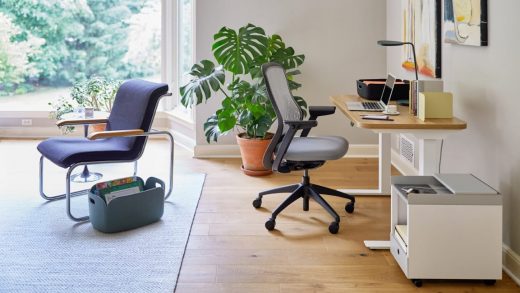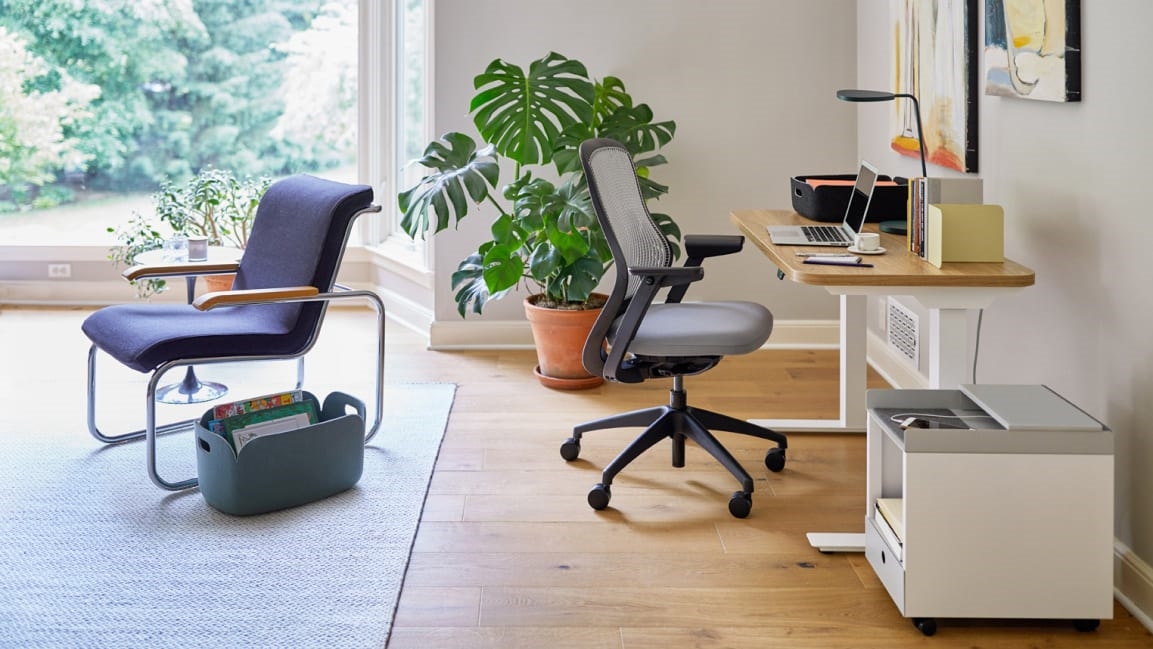How to rethink your home office: 4 tips from a renowned furniture designer
Sometimes I feel like I’m not working from home, so much as living in my workspace. During the day, my husband and I share a home office where we try to get as much work done as possible in the small windows of time during which we’re not watching our daughter. Of course, my daughter still finds a way to barge in, demanding a cuddle and serving as a constant, very cute distraction. Life bleeds into work, work bleeds into life, and neither is particularly satisfying.
Could good design help? Benjamin Pardo, design director for the esteemed furniture company Knoll, believes it can. Over the course of his career, he has thought a great deal about how design can improve the way we work, and he has designed some well-known ergonomic furniture that fill offices around the world, like the Generation and ReGeneration chairs.
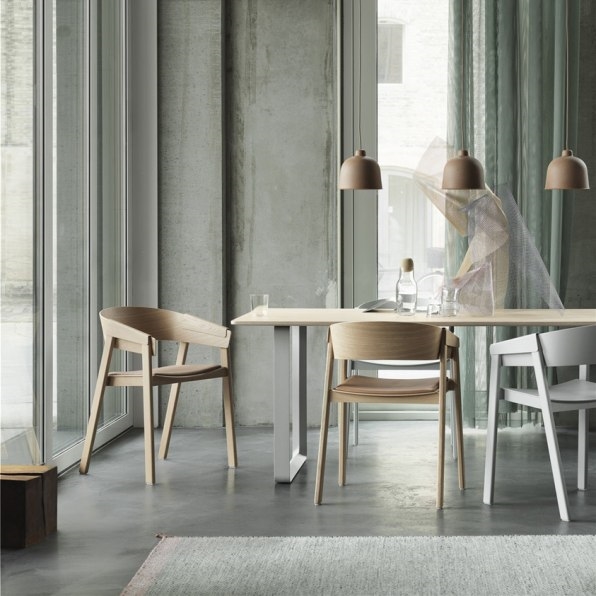
Now, he’s turning his attention to the home office. Over the past few months, he has observed how chaotic and distracting the reality of working from home has become for many people. Pardo is not just concerned about creating home workspaces that allow us to be productive; he also wants to ensure that our homes remain safe spaces where we can escape from the stresses of work. “Our homes need to be a place of comfort, where we can express our identity and personality,” Pardo says. “We need to design spaces that are flexible and allow us to both work and live at home.” On Knoll’s new Work From Home website, Pardo shows how pieces traditionally designed for offices can be adapted for home settings. Though the site highlights Knoll products, it offers inspiration that anyone working from home could apply to their own space.
The timing is apt. The pandemic has forced many companies to consider the long-term value of remote work. Assorted tech companies, including Facebook and Slack, have already announced that employees can work from home permanently. Developers are thinking about how to transform offices into residential housing across the country. And many city-dwellers are thinking about moving to more spacious homes where they can have designated work spaces. The home office is here to stay. Here are Pardo’s key insights for designing homes that balance the needs of both working and living.
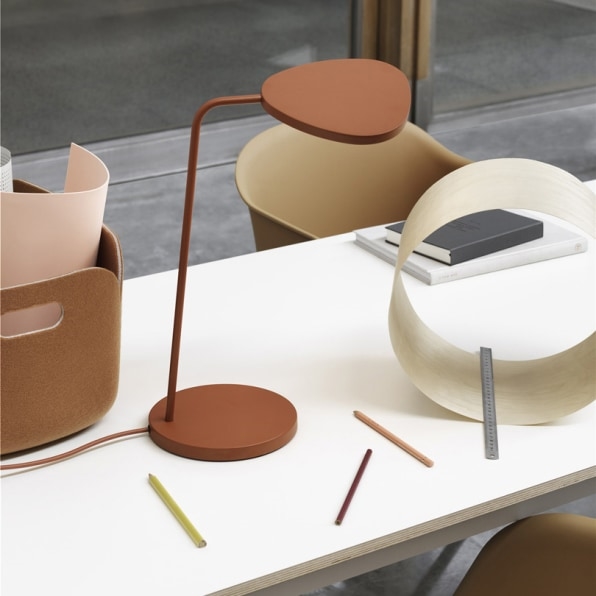
Make easy transitions
There are many people who don’t have the luxury of a separate home office. But Pardo says with some thoughtful design tweaks, it is possible to create a productive workspace. The key is to quickly convert the room back to its original purpose in the home, so the stresses of work don’t impinge on the time you might spend decompressing or connecting with family members.
In his own New York apartment, for instance, he set up a rolling desk that he uses during the day, but that can be moved out of sight at dinnertime or during the weekend. If your preferred workspace is your dinner table, Pardo says you should consider getting some storage containers, so you can quickly put all of your work stuff out of sight at the end of the workday. Muuto, a design firm recently acquired by Knoll, has created a set of felted baskets that are specifically designed for this purpose, but Pardo says any containers would work. The idea is to put away your documents and electronics quickly, without a lot of fuss, so you and your family can have meals together without the stress of the workday lingering in the room. (If you work in your bedroom, this same logic applies, since you don’t want to be thinking about work when you’re getting ready for bed.)
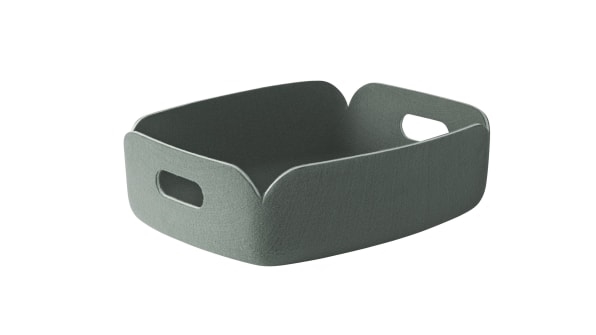
Build in movement
A lot of home office furniture on the market assumes that we work in a static position, sitting still in front of our computers for hours on end. But Pardo’s research has found that people tend to move a lot when they work. A decade ago, when he collaborated with the New Zealand-based firm Formway Design to create Knoll’s Generation office chair, he studied hours of people sitting at their desks working and he found that people are constantly twiddling their fingers, fiddling with things on their desk, and getting up. As children, we were taught that fidgeting is bad, but psychologists now believe that it could actually improve your productivity because it occupies parts of your brain that are inactive, averting boredom. “Men, in particular, leaned back in their chairs, stretching out their arms, every so often,” Pardo says. “Women tucked one leg under the other and leaned into their computer screens when they were trying to focus.”
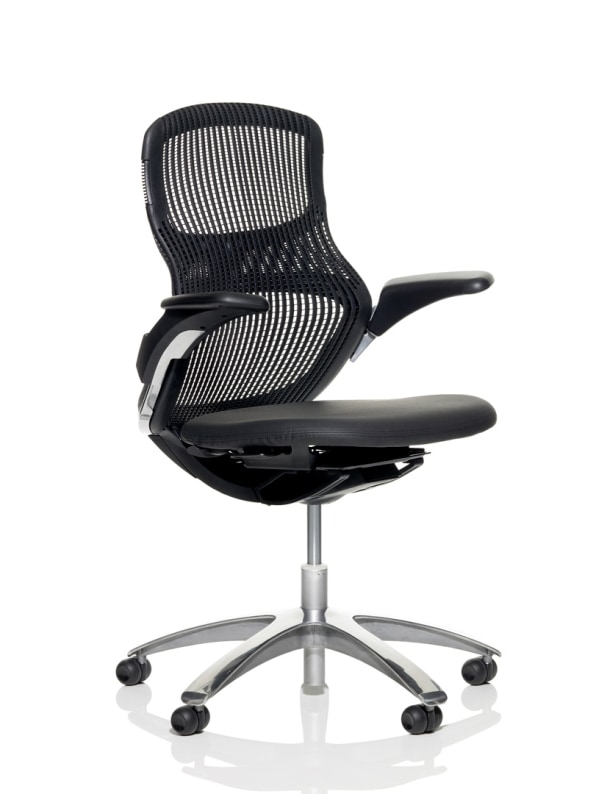
Pardo says it’s useful to incorporate movement into your home office setup. If you’re in the market for a new office chair, for instance, you should get one that lets you swivel. The backs and arms should also have some degree of flexibility, so the chair adapts to your natural movement. “You don’t want a chair that’s just a bucket for your body,” says Pardo. “You want one that supports you as you move. And if you have to quickly leave your desk because your child needs you, you want to be able to quickly return to the comfortable position you were in before. ”
Create multiple workspaces
If buying a new chair isn’t in the cards, Pardo says you can also incorporate movement into your day by creating multiple workspaces that allow you to change your posture as you work. In a traditional office, you’re constantly leaving your desk to attend meetings and speak with colleagues. But when you’re working from home, doing all of your meetings on your laptop, it’s easy to spend hours hunched over at your desk without moving. This can lead to body aches, and it can also hinder your creativity.
Pardo suggests creating many workspaces around the house. One way to do this is to think about where the light hits your home, and move throughout the day into rooms where you get the most natural light. You might work in your living room table for part of the day, or on the sofa. If you have a home office, you could put a lounge chair close to your desk. “Different types of work call for different postures,” Pardo says.
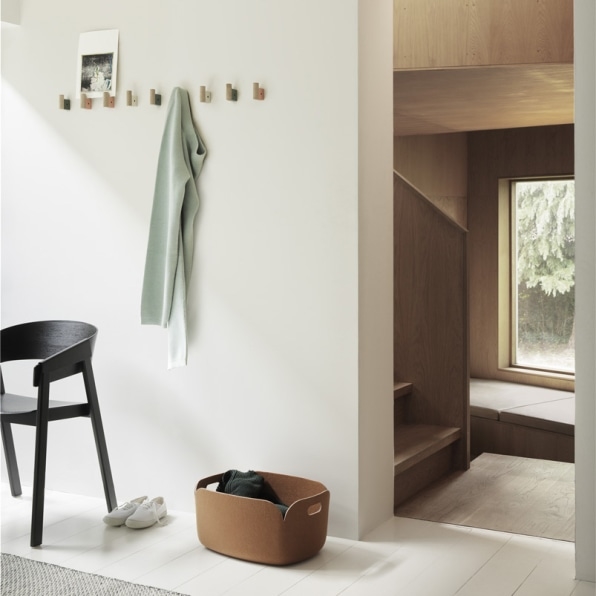
Style is not frivolous
At the office, your workspace tends to reflect the culture and design sensibilities of your company. But your home office is still part of your home, and Pardo believes you should invest in making that space feeling comforting and reflective of your personality. That might seem frivolous, particularly when many of us are stressed and trying to do our best under difficult circumstances. But it is precisely for this reason that incorporating your personal style into your office is key. You want to feel good showing up to your desk in the morning and you don’t want your workspace to be an eyesore that causes you stress.
But there’s another reason to think about aesthetics: Zoom. Since everyone can glimpse into our homes on Zoom calls, our workspace can send important signals about who we are and how we approach our work. It’s worth designing our workspaces not just to make ourselves happy, but also to articulate who we are and how we approach our work to those who will see us on videoconferences. In other words, now might be the time to invest in that bookshelf or piece of art you’ve been eyeing.
(26)

